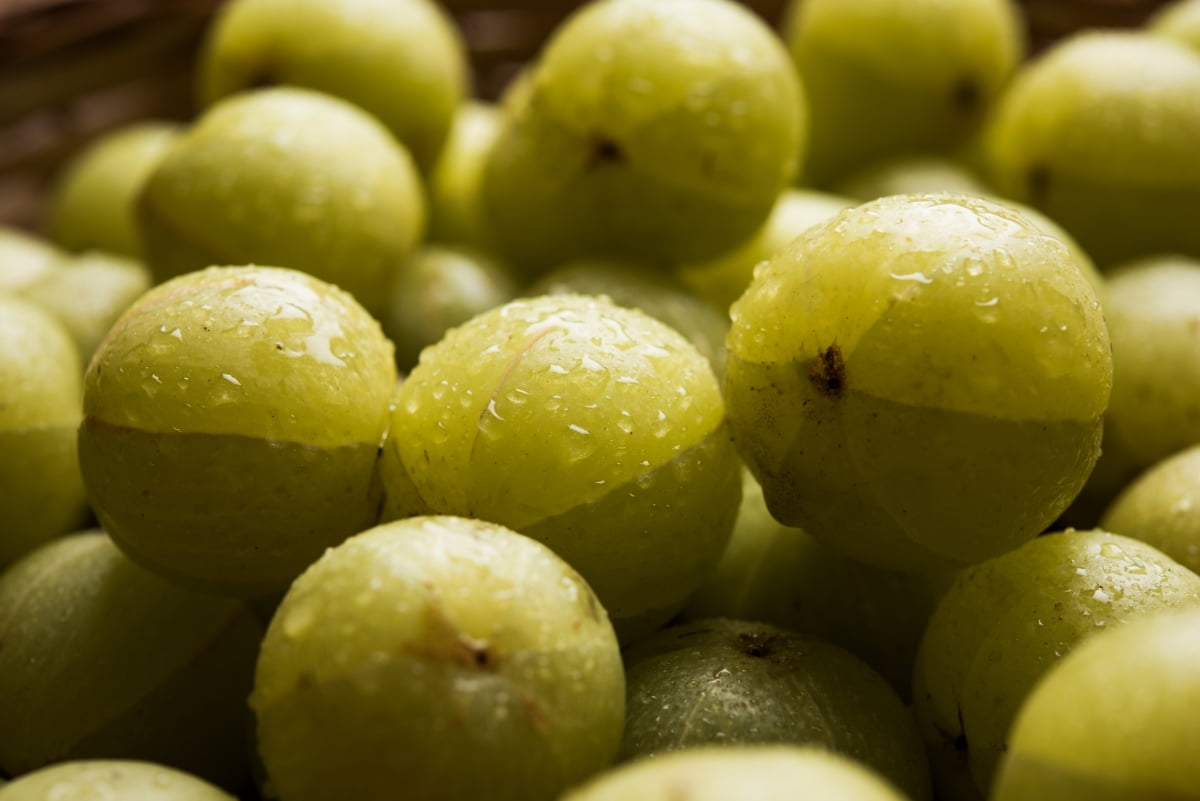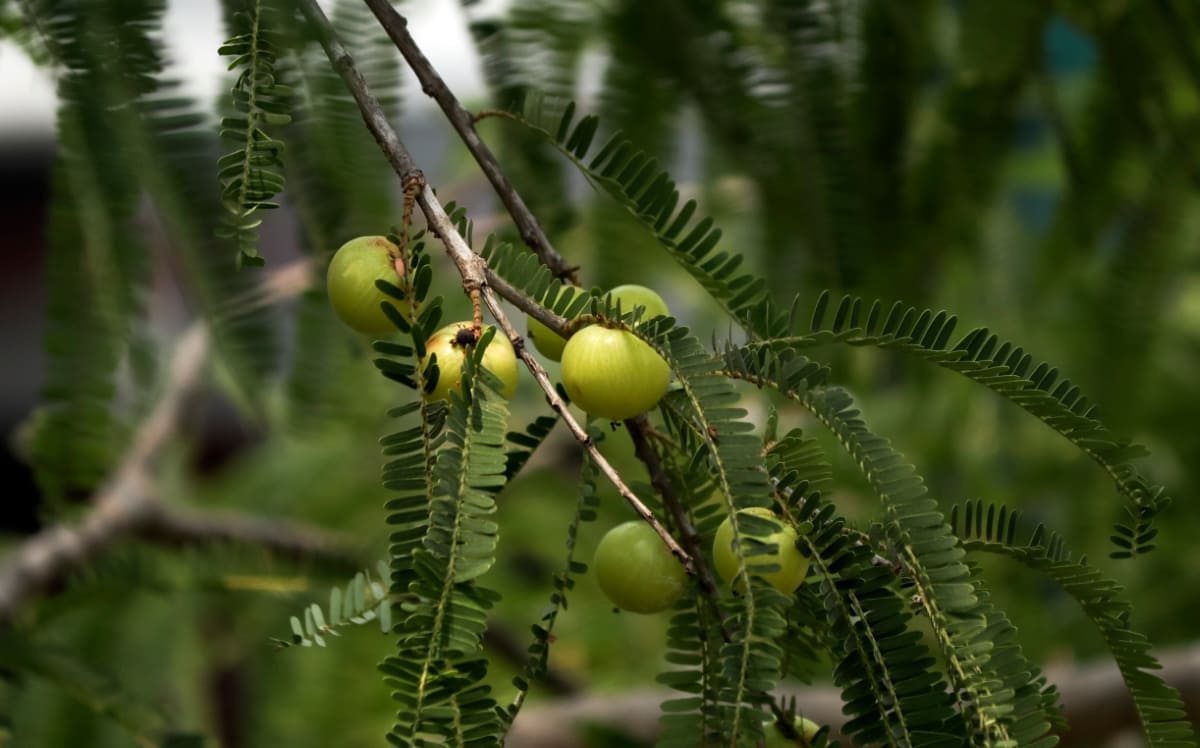Unlocking the full potential of Amla fruit size requires a strategic approach to growth optimization. Cultivating larger Amla fruits involves a careful balance of essential nutrients, soil enrichment, and cultivation practices. In this exploration, we delve into the key factors that contribute to maximizing Amla fruit size, providing insights for growers seeking to enhance their yields through effective growth strategies.

How to Increase Amla Fruit Size
Essential Nutrients for Maximizing Amla Fruit Growth
To achieve optimal Amla fruit growth, it’s crucial to focus on providing essential nutrients that play a pivotal role in maximizing size. Amla nutrition for bigger fruits involves a strategic combination of key elements. Incorporating a nutrient-rich soil fortified with nitrogen, phosphorus, and potassium is essential.
Additionally, micronutrients such as iron, zinc, and magnesium are key contributors to Amla fruit size enhancement. By prioritizing Amla fruit size enhancement through comprehensive nutrition management, cultivators can optimize their yields and reap the benefits of healthier and more substantial Amla fruits.
Innovative Irrigation Techniques for Larger Amla Fruits
In the quest for larger Amla fruits, innovative irrigation techniques play a pivotal role in ensuring optimal growth. Employing specialized Amla watering methods for large fruits can significantly impact yield. Drip irrigation, a precise and water-efficient system, directly delivers water to the root zone, minimizing water wastage and promoting consistent soil moisture. Soil moisture sensors integrated into smart irrigation systems enable growers to monitor and adjust water levels based on real-time data.
Furthermore, adopting subsurface irrigation techniques facilitates enhanced root development, contributing to the overall health and size of Amla fruits. Implementing these Amla fruit growth techniques not only conserves water resources but also optimizes nutrient absorption, creating a climate conducive to the cultivation of larger, healthier Amla fruits.
Optimizing Soil Quality for Increased Amla Size
In the pursuit of larger Amla fruits, optimizing soil quality is paramount, particularly focusing on maintaining a pH range of 6.5 to 9.5. Amla soil preparation for bigger fruits involves meticulous attention to pH levels, ensuring they fall within this optimal range. Begin by conducting a soil test to assess the existing pH and make necessary amendments using lime or sulfur to achieve the desired balance.
Moreover, enrich the soil with organic matter, such as well-rotted compost, to enhance its structure and fertility. Adequate drainage is essential, preventing waterlogging and root-related issues. This comprehensive approach to Amla fruit size improvement through soil optimization establishes a favorable environment, allowing the plants to thrive and produce larger, high-quality fruits.
Effective Fertilization Strategies for Bigger Amla
Implementing effective fertilization strategies is crucial in cultivating a thriving orchard to achieve bigger Amla fruits. Amla fertilization for bigger fruit size involves a balanced application of essential nutrients, with a focus on nitrogen (N), phosphorus (P), and potassium (K) ratios. Use a balanced fertilizer with an N:P:K of 10-10-10 or 14-14-14.
In case you missed it: Frequently Asked Questions About Amla/Indian Gooseberry Farming

In addition to synthetic fertilizers, consider incorporating organic fertilizers such as well-rotted compost, poultry manure, or vermicompost. These organic alternatives provide essential nutrients and contribute to soil structure and microbial activity, fostering a sustainable and nutrient-rich environment for Amla plants. Adopting a well-planned fertilization schedule, including both synthetic and organic sources, is pivotal in Amla large fruit cultivation.
Pruning Practices to Encourage Larger Amla Yield
Pruning practices play a pivotal role in encouraging a larger Amla yield, with specific Amla pruning techniques for large fruits contributing to optimal growth and development. A strategic approach to pruning involves the removal of dead or overcrowded branches, promoting better air circulation and sunlight penetration. This not only enhances overall plant health but also stimulates increased fruit production.
Implementing timely pruning can redirect the plant’s energy towards fruit-bearing branches, fostering larger Amla fruits. Utilize techniques such as selective thinning and heading cuts to shape the canopy and manage the size of the tree effectively. Regular maintenance pruning throughout the growing season ensures that resources are efficiently utilized for Amla fruit size maximization.
The Role of Climate in Enhancing Amla Fruit Size
The role of climate is pivotal in the quest to enhance Amla fruit size, as specific temperature conditions significantly impact Amla fruit growth optimization. Amla climate’s impact on fruit size is particularly evident in its sensitivity to temperature fluctuations. Amla, native to subtropical regions, thrives in temperatures ranging from 25°C to 35°C.
Extreme temperatures, either too high or too low, can adversely affect Amla fruit set and size. Frost conditions during flowering can lead to reduced yields, while excessively high temperatures may cause fruit drop. Therefore, meticulous attention to regional climate patterns and protective measures during extreme temperatures are crucial for successful Amla cultivation.
Organic Approaches to Boosting Amla Fruit Dimensions
In the realm of organic Amla farming for bigger fruits, several holistic approaches can be employed to boost Amla fruit dimensions sustainably. Implementing nutrient-rich compost and well-decomposed organic matter into the soil enhances its fertility, providing a steady release of nutrients crucial for Amla growth. Utilize cover cropping and green manure practices to improve soil structure, retain moisture, and foster a thriving microbial community.
In pest management, embrace natural predators and beneficial insects to control pests, minimizing the need for chemical interventions. Additionally, consider companion planting with nitrogen-fixing plants to enhance soil fertility organically. Furthermore, practicing crop rotation helps prevent soil-borne diseases and maintains overall soil health. These organic strategies contribute not only to Amla fruit size expansion but also promote a balanced and sustainable ecosystem within the orchard.
Pest and Disease Management for Healthier, Larger Amla
Achieving healthier and larger Amla fruits involves a balanced approach to pest and disease management, encompassing both organic and chemical ways. Amla pest control for healthy big fruits can be effectively addressed through the judicious use of organic solutions such as neem oil, garlic spray, or insecticidal soaps. These organic pesticides not only target pests but also contribute to the overall well-being of the Amla plants.
In case you missed it: Ultimate Guide to Growing Red Indian Gooseberry (Amla): From Seed and Cuttings, How to Plant, Prune, Care, and Harvest

In situations where a more immediate response is necessary, chemical pesticides can be employed, provided they are chosen and applied with care to minimize environmental impact. Regular monitoring of the orchard for signs of pests or diseases is essential for timely intervention. Implementing a comprehensive pest management plan ensures Amla fruit growth protection, promoting a robust and disease-resistant orchard.
Advanced Agricultural Technologies for Amla Size Increase
In the pursuit of larger Amla fruits, harnessing advanced agricultural technologies is pivotal, shaping a paradigm of Amla growth technology for bigger fruits and ushering in a new era of innovation. Precision agriculture techniques, including remote sensing and drone technology, enable growers to monitor Amla orchards with unprecedented accuracy, optimize resource allocation, and identify areas for improvement. Sensor-based irrigation systems offer real-time data on soil moisture, ensuring a consistent and tailored approach to watering, a critical factor in Amla fruit size enhancement.
Furthermore, controlled-environment agriculture, such as greenhouse or polyhouse cultivation, provides an opportunity to manipulate environmental variables like temperature and humidity, creating an ideal setting for larger Amla yields. The integration of these advanced agricultural technologies represents a paradigm shift in Amla fruit size innovation, empowering growers with tools to maximize yields, improve resource efficiency, and stay at the forefront of progressive agricultural practices.
Cultivar Selection for Maximizing Amla Fruit Size
Cultivar selection plays a pivotal role in maximizing Amla fruit size, and strategic choices can significantly impact overall yield. To achieve Amla fruit size enhancement, growers should prioritize varieties known for producing bigger fruits.
Conduct thorough research on available bigger Amla varieties, considering factors such as climate compatibility, soil requirements, and disease resistance. Some notable cultivars include “NA-7,” “Chakaiya,” and “Kanchan.” These cultivars exhibit desirable characteristics such as larger fruit size, high yield, and good adaptability, contributing to successful Amla cultivation.
In case you missed it: 1-Acre Amla Cultivation Project Report: A Comprehensive Guide to the Production Cost and Profit

Conclusion
In conclusion, exploring Amla fruit growth optimization involves a multifaceted approach, encompassing soil management, fertilization, irrigation, climate considerations, pruning, and the use of advanced technologies. By combining these strategies and adopting a careful cultivar selection process, growers can unlock the full potential for larger Amla fruits.
- Feed Your Flock for Less: Top 10 Tips to Save on Chicken Feed
- Ultimate Guide to Ossabaw Island Hog: Breeding, Raising, Diet, and Care
- Hatching Answers: The Top 10 Reasons Your Chickens Aren’t Laying Eggs
- Eggs and Economics: Breaking Down the Cost of Raising Backyard Chickens
- Defend Your Greens: Proven Methods to Keep Iguanas Out of Your Garden
- Ultimate Guide to Cinnamon Queen Chicken: A Comprehensive Guide for Beginners
- Ultimate Guide to California Tan Chicken: Breeding, Raising, Diet, Egg-Production and Care
- Ultimate Guide to Marsh Daisy Chicken: Breeding, Raising, Diet, and Care
- 10 Types of Chicken Farming Businesses You Can Start for Profits